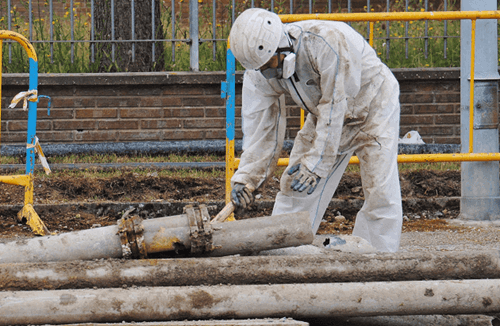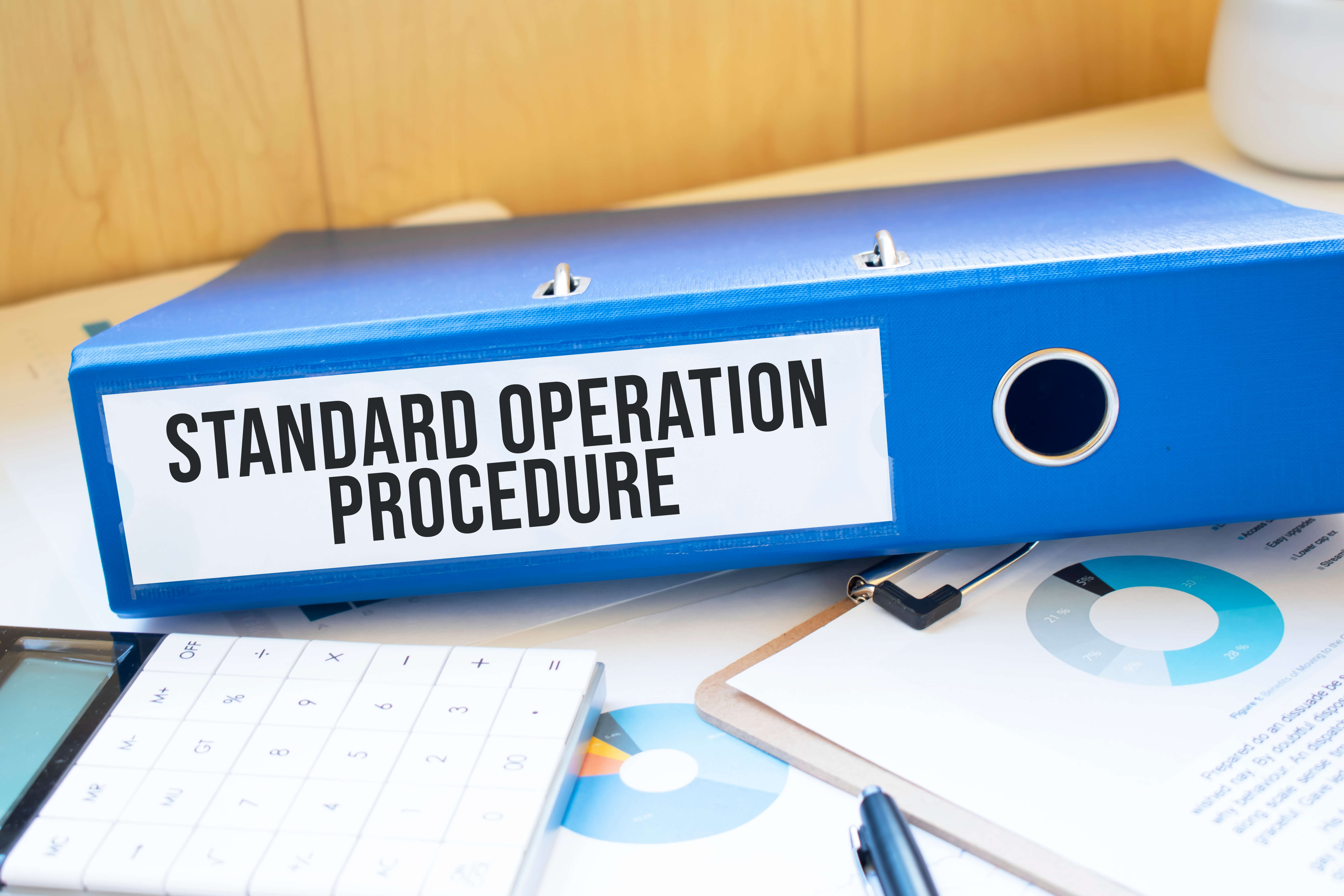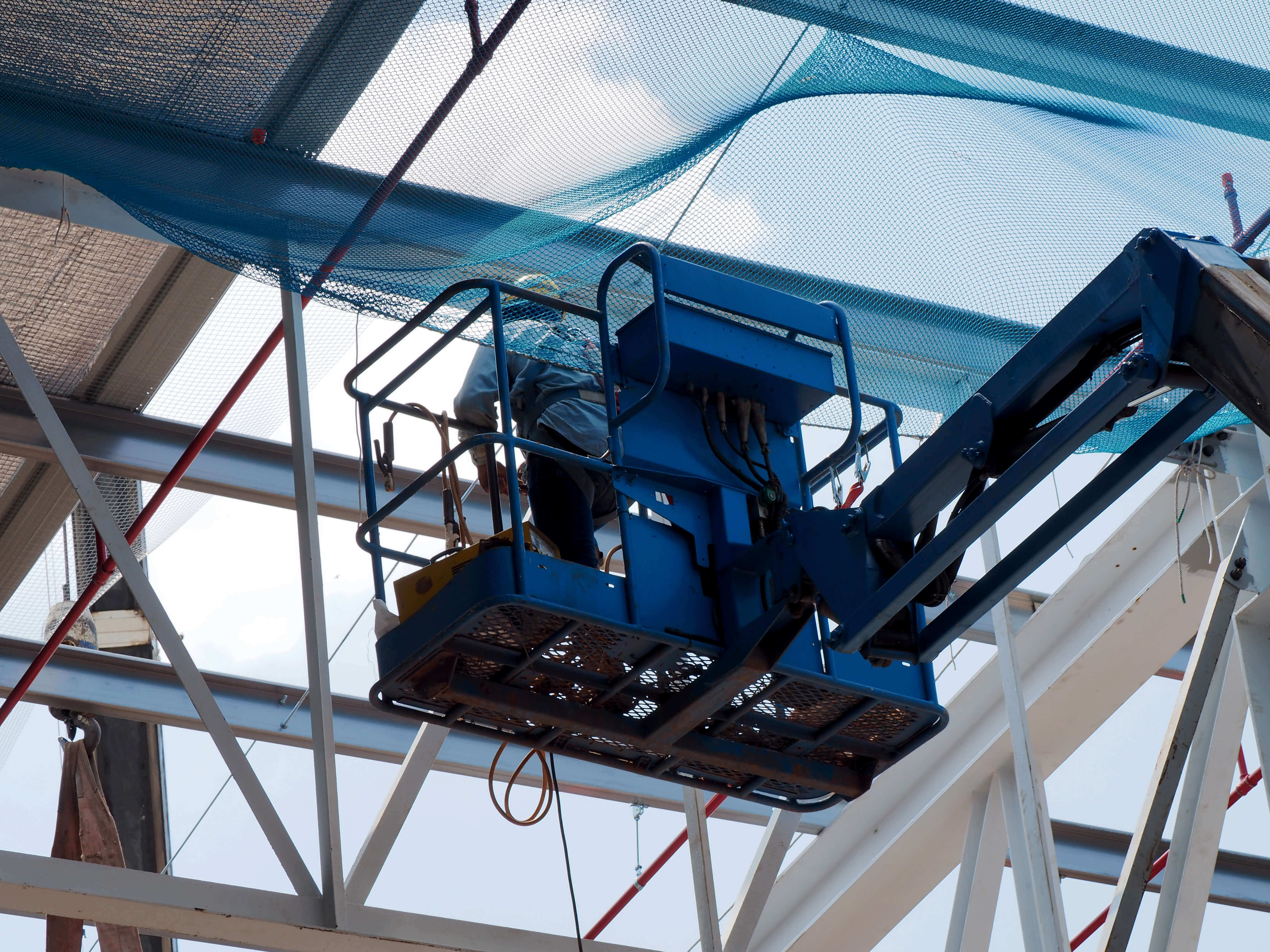Around 5,000 people die every year in the UK due to exposure to asbestos. Four serious health conditions linked to asbestos kill more people every year than accidents on the roads do. And as an employer, you are responsible for managing this health risk in the workplace.
Statistical data released by the Health and Safety Executive (HSE) in recent years highlights the gravity of this problem. As a business leader, you might ask yourself how to manage asbestos in the workplace?
Our Croner Health and Safety specialists can help you with any asbestos in the workplace queries. Call us today on 01455 858 132 if you have immediate concerns.
By reading this guide, you will gain better asbestos awareness. This should in turn help you take the right decisions about how to manage risks in the workplace going forward.
What is asbestos?
Asbestos is a group of six naturally found silicate minerals made up of microscopic fibres. These fibres present heat and chemical resistant properties, hence their previously widespread use.
The building industry has used asbestos extensively since the late 1800s in:
- Walls and ceilings coatings
- Lagging on boilers and pipes
- Toilet seats and cisterns
- Fire blankets
- Vinyl floor tiles
- Asbestos cement roofs
However, in the 1960s and 1970s the long-term danger of asbestos on human health became known. This is why you need to be aware of what asbestos regulations mean for your business.
Asbestos regulations in the workplace in the UK
Where do you even start when you consider your asbestos related employer’s duties?

We know how overwhelming it can feel to deal with such a hidden problem. Many premises across the country will still contain asbestos in the fabric of the building. However, you will find that records do not always account for it. More often than not, there will be no mention of asbestos at all.
If we look at UK law and building regulations, much has changed over the last decades. The Control of Asbestos Regulations 2012, that came into force in April 2012, applies to all non-domestic premises. Regardless of the nature of your business or industry, they will apply to you too.
Through these regulations, UK law bans use of all types of asbestos. It cannot be manufactured, imported, or used on UK sites. However, any premise built before 2000 might contain this dangerous material. Even something as simple as drilling into a wall to put shelves up will potentially release it.
Before you carry out any refurbishment, put an asbestos risk assessment in place. If records do not certify the material is or it isn’t present, presume the building contains asbestos. This means you need to take precautions to address the highest level of risk from potential asbestos exposure.
Our Croner health and safety experts will support you through this process. Contact us today so you avoid needless concern and risks over asbestos regulations.
Steps to minimise risks of asbestos exposure in the workplace
The duty-holder needs to minimise the risks of exposure to asbestos, by taking reasonable steps to:
- Research if the building contains asbestos, what type of asbestos is present (as some or more hazardous than others) where it is located and in what condition.
- Assume the presence in materials used that usually contain asbestos.
- Keep and update records of the identified or presumed condition and location of such materials.
- Carry out risk assessments for any person that could be exposed.
- Put an action plan in place to manage any risks.
Where possible, consider removal over an extended period to completely remove the risk and ongoing associated costs of managing the risk. - Review the risk assessments and the action plan and update as necessary.
- Inform any person likely to work with and disturb asbestos about the location and condition of materials that contain it.
Let’s look at a real-life scenario.
You might decide to refurbish your offices, or extend your factory floor and you discover materials that seem to contain asbestos. Work needs to halt immediately, followed by isolating the area marked with signs that indicate danger of exposure. You will have to report the presence of asbestos in the workplace and determine what the appropriate control measures are. In some cases, you will need to hire a licensed contractor to remove the material and carry out air monitoring on completion.
If records show that asbestos is present, do not disturb it unless it is necessary. It is dangerous only if disturbed and people breath in the invisible fibres.
Accessing asbestos awareness training (UKATA accredited is recommended) to prepare you and your employees for dealing with this hidden problem. It is important to make sure that you manage it appropriately, not only to protect your business’ reputation, but because people’s lives are at stake.
Health risks from exposure to asbestos
All four health conditions related to asbestos exposure develop slowly in time. If constantly exposed in the workplace today, your staff risk developing these diseases much later in life. Symptoms will not affect them immediately. Even more disturbingly, the diagnosis often occurs too late, when the disease has already become lethal.

The four diseases caused by exposure to asbestos are:
- Mesothelioma – a type of cancer that affects the lining of the lungs and the lining around the lower digestive track.
- Asbestos-related lung cancer – it looks the same as lung cancer caused by other causes such as smoking.
- Asbestosis – serious lung scarring occurs after heavy exposure over a number of years. This results in shortness of breath that can become fatal.
- Pleural thickening – in this case, heavy asbestos exposure causes the lining of the lung to thicken and swell. This also results in shortness of breath and chest discomfort.
Your employees might not be in immediate risk of working with asbestos. By forward-thinking and following all the appropriate steps you will avoid any potential exposure. Imagine that years down the line your former employee gets one of the above diagnoses, and investigations lead back to you.
Talk to a Croner expert today
We hope the above highlighted why you need to have appropriate asbestos control measures in place. As the presence of such materials is not obvious, proper systems will prevent exposure while allowing you to carry any work necessary on premises.
We can help you draw and implement a plan compliant with UK law and asbestos control regulations. Call us today on 01455 858 132.
Related resources
Categories
- Business Advice
- Contracts & Documentation
- Culture & Performance
- Disciplinary & Grievances
- Dismissals & Conduct
- Employee Conduct
- Employment Law
- End of Contract
- Equality & Discrimination
- Health & Safety
- Hiring & Managing
- Leave & Absence
- Managing Health & Safety
- Moving
- Occupational Health
- Pay & Benefits
- Recruitment
- Risk & Welfare




